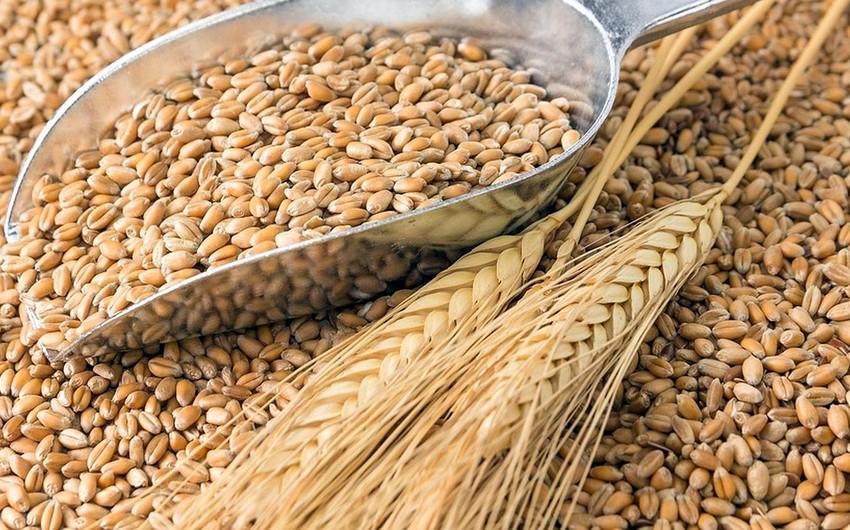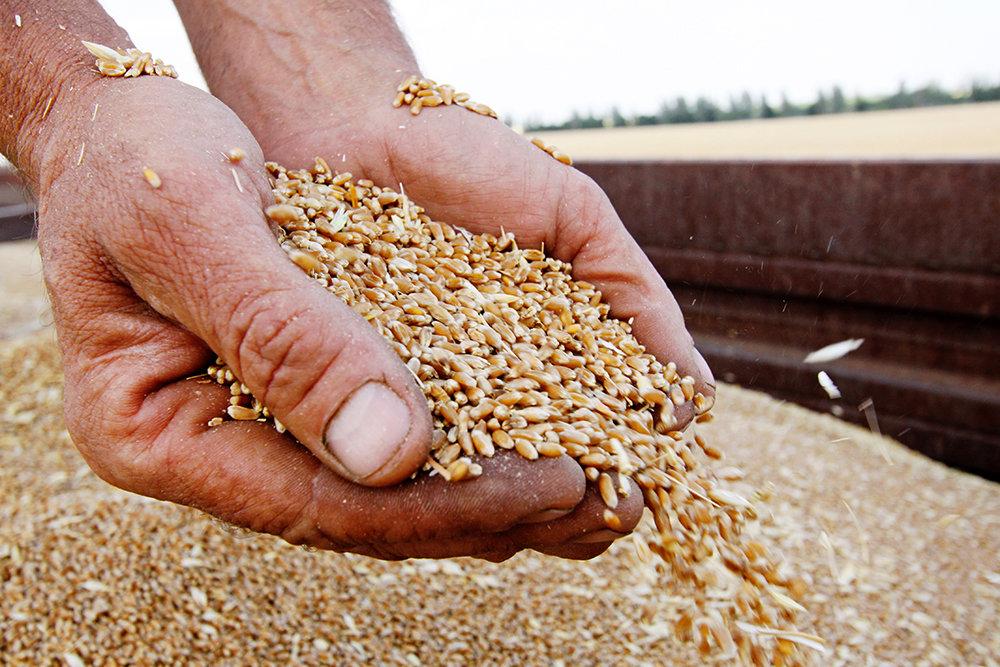Azerbaijan strives to reduce dependency on wheat imports Boosting food security
Abundant rainfall and low temperatures in May and early June this year have damaged crops in several regions, slightly delaying the schedule for the start of grain harvesting in Azerbaijan. Today, it is quite difficult to predict the final harvest after the spring crops are gathered at the end of summer.
According to data recently published by the Ministry of Agriculture of Azerbaijan, nearly 63% of winter crop areas have been harvested in the country, but the average grain yield is still not reaching last year's levels. The situation is exacerbated by poor harvest forecasts in Russia – the main market from which our country imports food wheat. Additionally, as of June 13, Russia has once again increased export duties on wheat and meslin. Fortunately, the July report from the Food and Agriculture Organization (FAO) of the United Nations offers significantly better forecasts for the global grain harvest in 2024 compared to last year.
According to the Ministry of Agriculture, as of July 4, 62.8% of grain fields in Azerbaijan, covering a total area of 635,646 hectares, have been harvested, which is 30,844 hectares more than during the same period last year.
In particular, harvesting has been fully completed on 86.4% of barley fields, while 45.7% of the wheat harvest has been gathered. As of the reporting date, a total of 2,025,070 tons of crops have been harvested from grain fields, including 1,089,912 tons of barley and 935,158 tons of wheat. To optimize the harvesting process, 1,576 combines were employed last and this month, slightly more than a third of which belong to the Agroservice JSC, along with numerous trucks and other machinery.
At the same time, about two-thirds of the harvest was gathered by private combines, including those belonging to fifty large agro-parks and specialized grain-sowing farms. Overall, barley harvesting is nearing completion in the lowland areas, while in the foothill regions, barley and winter wheat harvesting will also be completed in the coming weeks. Following this, from late July to August, the harvesting of spring wheat, oats, barley, and corn will take place, and the harvest of leguminous crops will conclude in September.
According to the latest data from the Ministry of Agriculture, the average yield this season was 29.7 centners of barley per hectare and 31.9 centners of wheat per hectare. This is lower than last year's figures: by the end of June 2023, the yield was 30.2 centners of barley and 34.4 centners of wheat per hectare. Of course, this slight decline should not be compared to previous years, which were marked by drought and a lack of irrigation water, adversely affecting yields. On the contrary, in March and April of this year, during the vegetative growth period of cereals, the fields received abundant moisture, which had a rather favourable impact on the growth of grain crops, especially those cultivated under rainfed conditions.
Nevertheless, the continued rainy weather in May and early June, along with landslides and strong winds that coincided with the final stages of grain ripening, created favourable conditions for the rapid growth of wild plants and weeds. All of this affected the yield to some extent and shifted the harvesting schedule to the second half of June. Unfortunately, in recent times, domestic farmers have not been able to replicate the successes of 2018 and 2019, when record grain harvests of 3.3 and 3.4 million tons, respectively, were collected in the country. For comparison, in 2022, the total grain harvest was about 2.85 million tons, and in 2023, 3.173 million tons of grain, including corn, were produced.
Last year, overall, was extremely successful for the industry, especially for grain-growing agro-parks, where the use of efficient irrigation systems, timely agrotechnical measures, and the application of herbicides and fertilizers often resulted in average yields exceeding 40 centners per hectare.

One way or another, Azerbaijan annually has to compensate for the shortage of hard-bread wheat varieties through supplies from neighbouring countries. "According to our estimates, until recent years, the level of self-sufficiency in food wheat was about 25%, and in 2023 this figure reached 34%," Azerbaijan's Minister of Agriculture, Majnun Mammadov, recently told Report. "Today, there is no talk of completely stopping wheat imports; the goal is to reduce dependence on them because production in each country depends on natural resources and climatic conditions. From this point of view, it would be very acceptable to bring the level of self-sufficiency in food wheat in our country to about 50-60%," the minister added.
As the Minister of Agriculture noted, the existing business model of grain farming in the post-Soviet region, for example in Russia, Ukraine, Kazakhstan, as well as in the USA, Canada, Australia, and Argentina, is practically identical: large areas, low added value per hectare, and thousands of hectares of grain fields per producer. Unfortunately, due to its geography, Azerbaijan cannot boast such vast areas of arable land for grain crops, nor the level of land concentration among individual farmers and even agro-parks.
Furthermore, according to FAO data, Azerbaijan is among the 20 countries in the world most affected by water scarcity: about 70% of the country's freshwater is used in agriculture, with significant losses in water channels. The process of introducing modern insulation technologies and concrete lining of channels has only just begun, and efficient irrigation systems in the fields, including those sown with grain, are currently mainly available in agro-parks and some specialized farming enterprises. The process of introducing electronic systems to monitor water resource use is also in its early stages.
It is quite obvious that the cost of wheat production on small farms in Azerbaijan can never compare with the vast areas of the world's leading grain-producing countries, where profitability is achieved through the scale of agricultural activities and the convenience of using agricultural machinery, irrigation, and chemicals.
Due to the aforementioned circumstances, our country still imports about 1.2 million tons of grain annually from neighbouring countries: specifically, about four-fifths of all food wheat is purchased in Russia, the rest is imported from Kazakhstan, with a small volume of flour and flour products coming from Türkiye. Supplies from war-torn Ukraine have ceased over the past two years. Russian imports are subject to several restrictions: since mid-2021, export quotas have been tightened to protect the domestic market, and additional customs duties and export taxes have been introduced on the export of grains, forage, feed additives, oilseeds, and various fertilizers. For example, as of June 13, 2024, Russia has again increased the export duty on wheat, meslin (a mixture of wheat and rye), and corn. The export duty rate for wheat is calculated based on an indicative price of $235.7 per ton.
In Azerbaijan, to mitigate the negative impact of restrictive tariffs in Russia, efforts are made to conduct large-scale purchases of wheat at the end of the harvest season when grain prices are lowest and duties are reduced. Last year, Azerbaijan harvested a good crop, leading to a decline in wheat prices in the autumn, consequently reducing wholesale flour prices at local flour mills. The cost of a 50 kg sack of flour dropped to a minimum of 26 manats ($15.3), and several types of wheat bread also became cheaper. However, in May of this year, the wholesale price of a 50 kg sack of flour rose to 27.35 manats ($16.1), and from early June, the same volume was sold for 30-32 manats ($17.65-$18.82). The future price of bread in the coming months will depend on the yields of spring wheat in the country and the outlook for the harvest in the main importer, Russia.
According to the FAO's update published on July 5, the July forecast for global grain production in 2024 has been increased by 7.9 million tons (0.3%), now reaching a record high of 285.4 million tons, a new historical maximum compared to 2023 levels. The grain price index decreased by 3% in June compared to May, thanks to increased production in major exporting countries. Despite FAO's reduced forecast for wheat production in Russia due to adverse weather in key production areas, overall high production growth is expected in Argentina, Brazil, Türkiye, and Ukraine, which will balance prices in the global and likely regional markets.

It is quite evident that Azerbaijan's dependence on global grain price fluctuations poses a significant risk to the country's food security. To minimize this dependency, Azerbaijan is putting maximum effort into transitioning from extensive agriculture to intensive farming techniques, aiming to increase grain production productivity. The country has long been focusing on expanding specialized grain farms with high levels of wheat production.
Additionally, to boost productivity despite adverse climatic conditions, a decree issued by the head of state on July 19, 2022, "On a number of measures to increase the level of self-sufficiency with food wheat," provides food subsidies of 100 manats ($58.8) per ton of wheat to grain farms using modern irrigation systems.
Last November, another decree was signed to support the agricultural sector: the Agricultural Credit and Development Agency (AKIA) was authorized to provide state guarantees for loans and subsidize interest rates on loans for purchasing modern irrigation systems for wheat production. The maximum loan amount for such projects is capped at 3 million manats ($1.7 million), with an interest rate not exceeding 15% and a repayment period of up to 5 years, including a favourable grace period.
At the same time, Azerbaijan has set a goal to develop high-tech grain farming agro-parks in the Karabakh and East Zangazur economic regions, which encompass a total of 1 million hectares suitable for agricultural production, including 128,000 hectares of irrigated arable land. Currently, grain cultivation in the Karabakh region is maximized only on lands cleared of mines and unexploded ordnance.
Over time, as liberated territories become free of mine threats, the areas allocated for grain cultivation will expand further. There are also plans to significantly increase grain production through a joint project with Israel, which involves providing Azerbaijan with advanced agricultural technologies for wheat cultivation. This initiative aims to meet domestic consumption needs in the coming years and establish grain exports from Azerbaijan.








